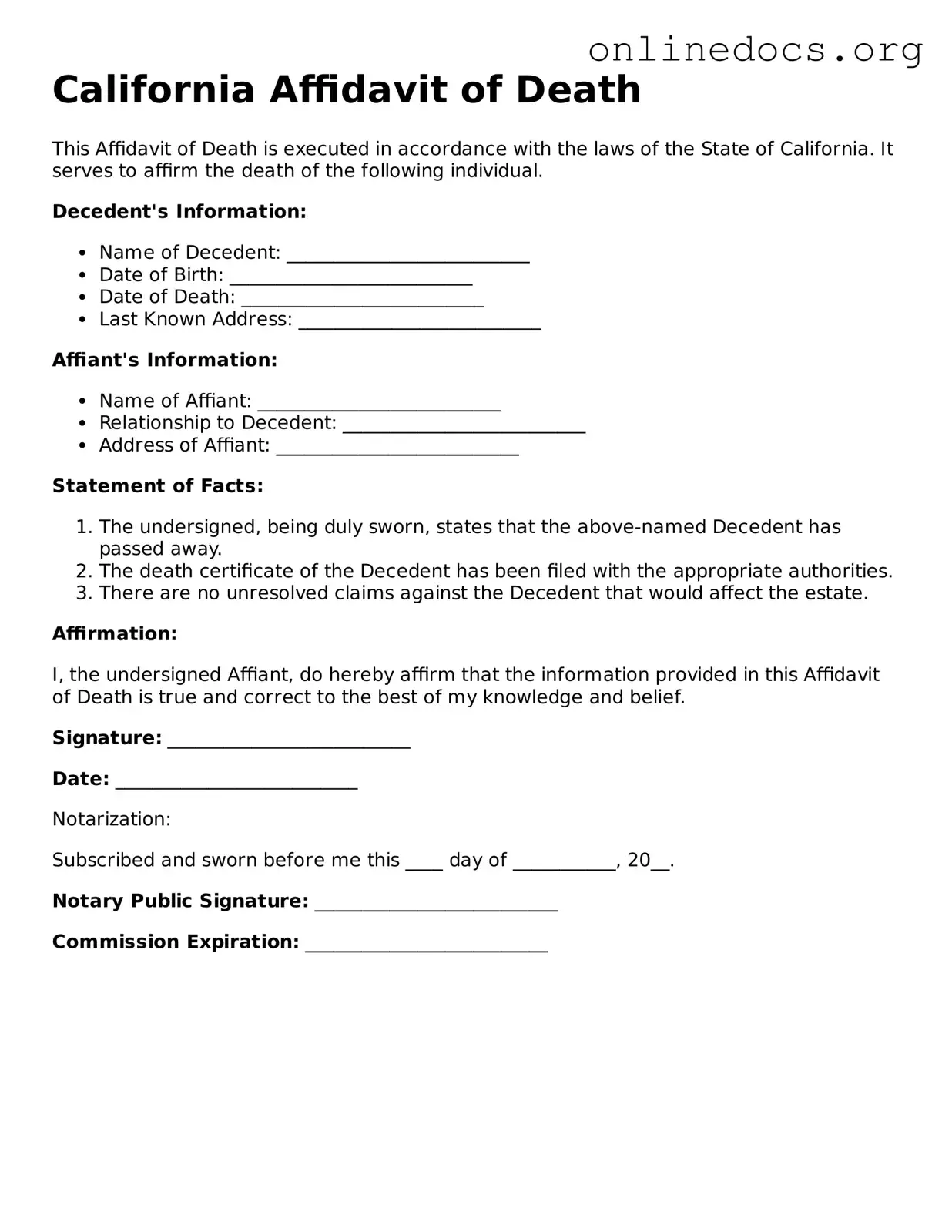The California Affidavit of Death form shares similarities with the Death Certificate. Both documents serve to officially acknowledge the passing of an individual. A Death Certificate is typically issued by a government authority and contains vital information such as the deceased's name, date of birth, and cause of death. This document is often required for legal purposes, including settling estates and claiming life insurance benefits. In contrast, the Affidavit of Death is usually prepared by a family member or an interested party, providing a sworn statement regarding the death, which may be used in certain legal contexts, such as transferring property ownership.
A Trailer Bill of Sale form in California serves as a legal document that records the sale and transfer of ownership of a trailer from one party to another. It works to provide both the buyer and the seller with necessary details for the transaction, ensuring a clear understanding and proof of purchase. This form is critical for registration and legal purposes in the state and can be easily obtained from sources like legalformspdf.com.
Another document that resembles the California Affidavit of Death is the Will. A Will outlines how a person's assets should be distributed after their death. While the Affidavit of Death confirms the occurrence of death, the Will provides instructions on what happens next. Both documents are crucial in the estate planning process. They ensure that the deceased's wishes are respected and that their loved ones can navigate the legal landscape following their passing. However, unlike the Affidavit, which is more about the fact of death, the Will focuses on the distribution of assets.
The California Affidavit of Death also has similarities with the Trust Declaration. A Trust Declaration is a legal document that establishes a trust, outlining how assets will be managed and distributed during and after a person's life. Like the Affidavit of Death, a Trust Declaration can play a key role in estate planning. When a person passes away, the Affidavit may be used to trigger the terms of the Trust, ensuring that the assets are handled according to the deceased's wishes. Both documents help streamline the process of asset distribution and provide clarity to surviving family members.
Lastly, the California Affidavit of Death is akin to the Probate Petition. A Probate Petition is filed in court to initiate the legal process of administering a deceased person's estate. This document formally requests the court to validate a Will and appoint a personal representative to manage the estate. The Affidavit of Death can accompany a Probate Petition to verify that the individual in question has indeed passed away. Both documents are essential for ensuring that the estate is handled according to the law and the deceased’s wishes, providing a structured approach to managing affairs after death.
